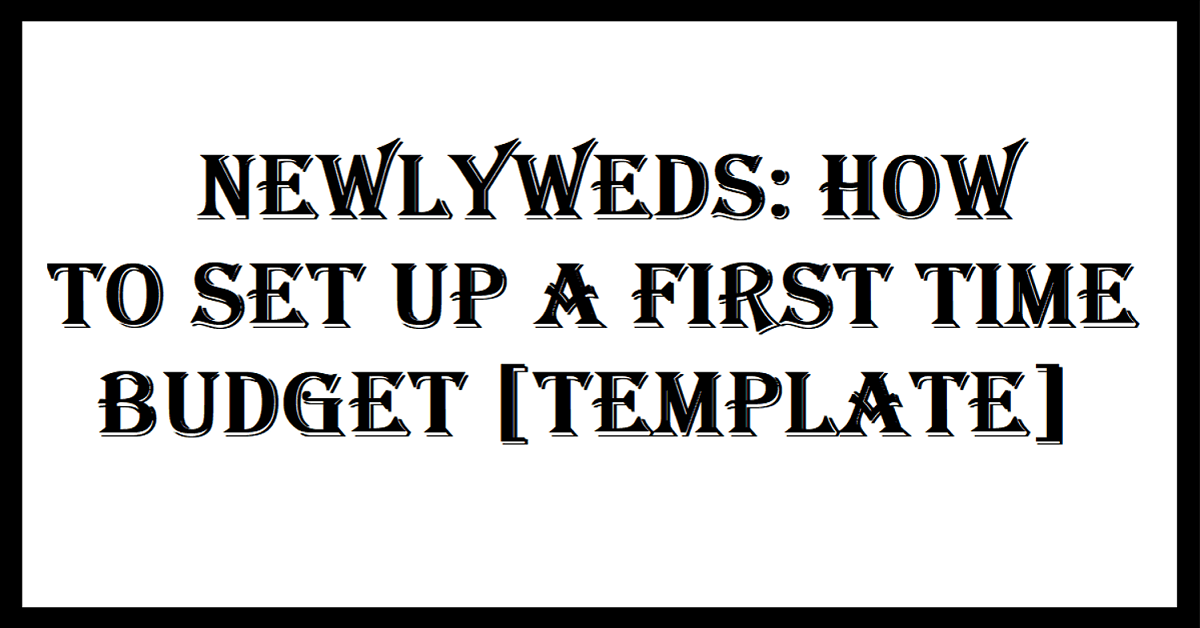If you are newlyweds, chances are you need to set a budget for the first time as a couple. This post will tell you the basics. It doesn’t matter if you feel scared or overwhelmed, coming to the same page with your finances will help you succeed in marriage and as a family.
About 31% of all couples disagree over their finances once a month at least, according to a study by study created by Ameriprise Financial, Inc. in 2016. This means it’s common and normal that people may not always agree. However, having a budget will give you a record with the details regarding where your money ought to be spent, and if disagreements are inevitable, you’ll have something to rely on.
Utilizing the Excel template available at this link, fill in these columns using your anticipated monthly figures. The budget will show the month in a glance, but it is designed in accordance with to the pay date for each week. It is possible to modify the headings to reflect the dates on which that you receive your monthly pay.
“Previous Balance” Column “previous balance” column lets you note the amount of money you be able to accumulate in the bank. The previous balance cells are designed to carry over the balance that you already have at the close of each week.
Income
Record in your paycheck the amount you receive or the amount you pay yourself from your business by the date you expect it.
Charitable Giving
Record the amount you would like to donate, whether it be one-tenth and a donation to a place of worship or your regular share to a non-profit.
Savings
Manage your savings and “pay yourself first” by recording the amount you will pay each paycheck or monthly. I put as little as $10 each month into special online savings accounts I have set up for my daughters. We also stash $10 away each week toward a vacation fund.
Loan Repayment
This section will record the monthly payments you pay for a vehicle loan or mortgage, or school loan. These are fixed payments as well as long-term payments.
Fixed Costs
This portion is for recurring monthly expenses which are a fixed amount.This generally applies to insurance payments, perhaps childcare costs and even subscriptions like Netflix.
Utilities
Utilities have their own section as the amount may vary from month to month. This allows you to quickly update your budget in one section each month. If you have a fixed budget for grocery, you can keep it here, but I keep it under cash, because the amount will vary.
Cash Items
The Cash Items section is for miscellaneous expenses you may incur during the week: gas and grocery and irregular expenses such as haircuts and Girl Scout cookies!
Special Expenses
This section is intended for any special costs you might anticipate — specifically birthday presents or other expenses that you’ll incur when traveling or guests are visiting. This will help you stay on the right the right track.
In the lower part of the budget there is an area where you can track the cash you spend in a regular basis, when you use your debit card to pay for the purchase. You may decide to withdraw the amount with cash and then use envelopes. I find it easy to use my debit card and then keep an eye on the budget.
Once you’ve set your budget for the first time, make adjustments where necessary to make sure you’re not spending too much in some areas or less in others.
How much should you budget?
In her book, All Your Worth, Sen. Elizabeth Warren and her daughter, Amelia describe a balanced-spending formula: allot 50% of your take-home pay to needs, 30% to wants and 20% to saving.
It may be helpful to use the Highlighting Tool to track your expenses during the month, so that you know what is out of your account and what is not.
How to replicate the monthly budget for the next month:
As you get closer to the close your month click on the bottom tab, and create a copy of your budget. Rename it for the month following. Make adjustments to your dates and figures that may be changing that you are aware of. If you have expenses that are variable You can leave them the same until your bill is in, and then add in the actual price.
Want to track this online?
Good idea. According to the Wall Street Journal, people who track their budgets online and consistently are more likely to stick to their budgets.
As well as my budget plan, I’ve created all accounts with Mint.com. Many people love YNAB as an budgeting tool too.
The trick is to figure out the one that works for you, and then keep it up. If you need to stop doing something for a couple of months or weeks, don’t quit. Keep going.
